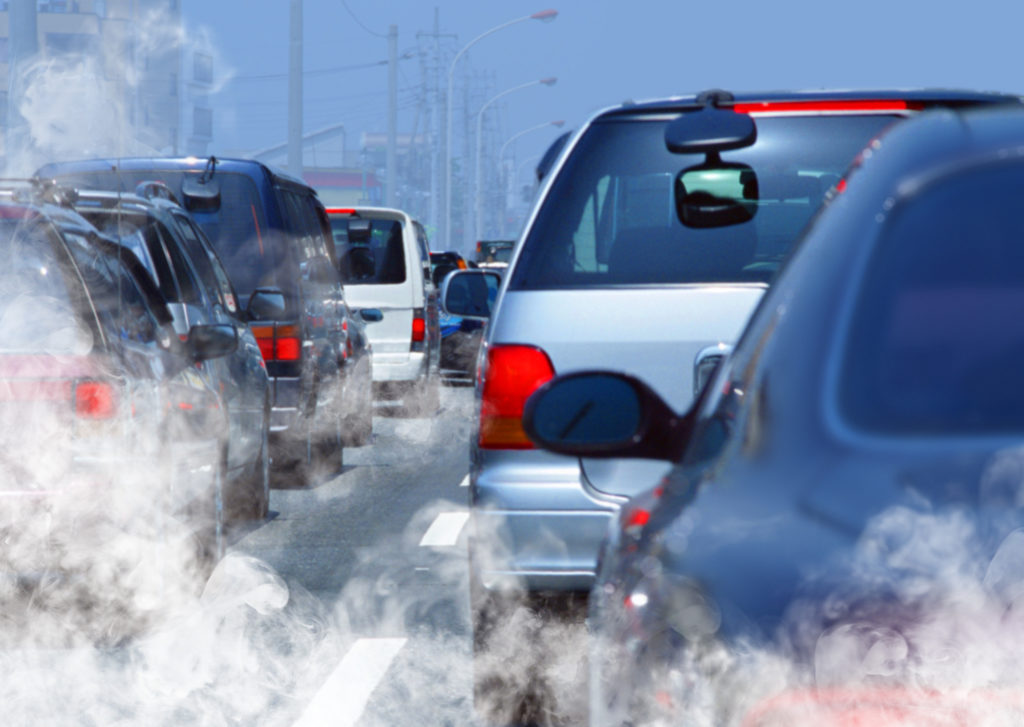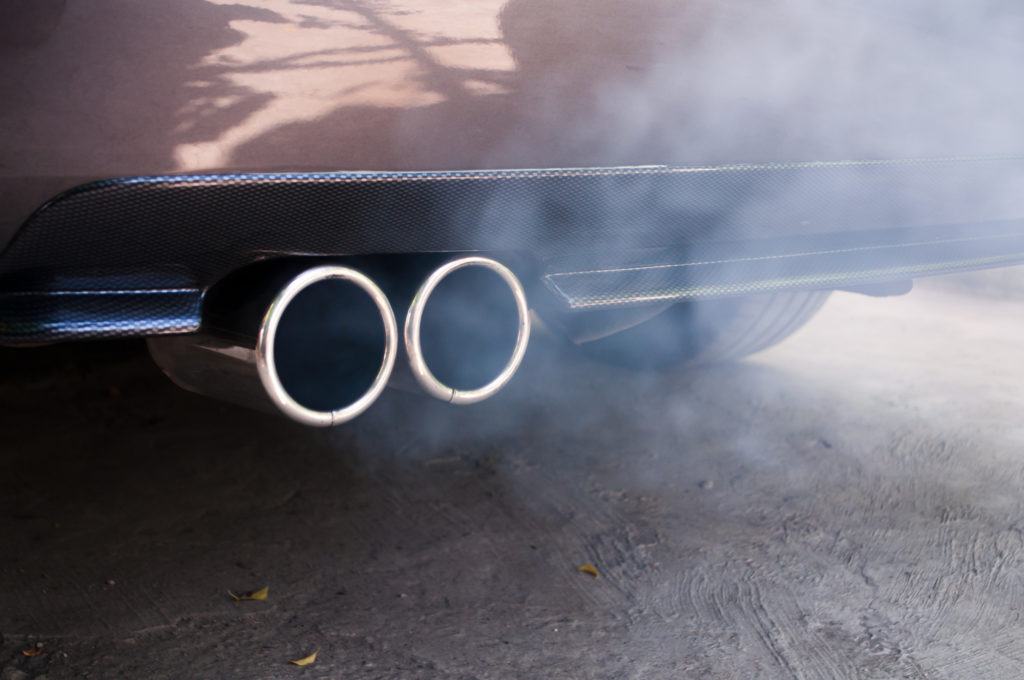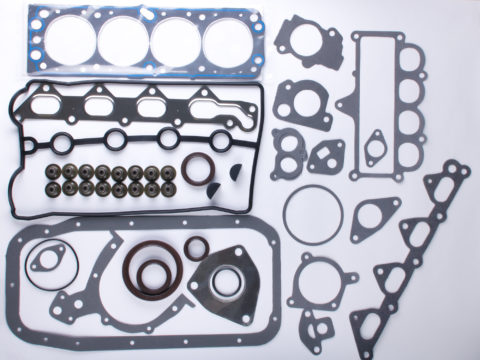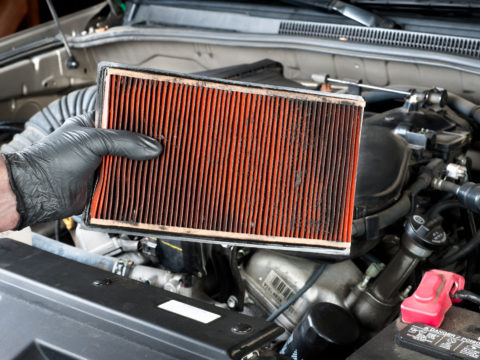A rough idling engine is an issue many older vehicles experience. Beyond an annoyance, however, rough idling is a symptom of one of many possible issues.
The following is a breakdown of the most common causes of an engine that idles rough and how you can tell if your vehicle does it.

Contents
What is a Normal Idle RPM for a Car?
Most vehicles will idle at between 600 and 1000 RPMs. The size of the vehicle and the vehicle’s engine does make a difference. Larger engines will idle at a higher RPM.
The idle speed is the rotational speed of a combustion engine when running but not engaged. A mechanic can adjust RPMs to meet different vehicle needs or get an engine to perform at its optimum.
What is Rough Idling in a Car?
When your vehicle “idles rough,” the RPMs will fluctuate without you doing anything to initiate a change. They will fall below 600 and then increase to over 1000.
That figure will vary depending on your vehicle and the RPM rate you normally experience.
It will be most evident when the vehicle is completely disengaged but may also fluctuate when it is in operation.
Additionally, if the RPM changes are due to engine temperature, it may be most noticeable when you start the vehicle or develop as you operate it.
What Causes Rough Idling in a Car?
Several issues can cause rough idling in a vehicle. Fortunately, not all of them require major work to fix. Getting your vehicle diagnosed by a qualified mechanic is vital to ensuring that you address any problems before they grow into larger issues.
Here are some of the most common causes of a rough idling engine:
Vacuum Leak
If your vehicle has sat for an extended period without being operated, or if you have just completed a long trip, the hoses in your engine may break down.
When that happens, seals are lost, and the vacuum pressure that exists normally ceases to exist.
That throws your engine off, which can cause your vehicle’s computer system to start trying to avoid misfires and can make RPMs fluctuate.

Bad Spark Plugs
Spark plugs are the unsung and unappreciated hero of the combustion engine. Without them, the engine either runs horribly or does not run. Yet, all too often, they are neglected, and that can lead to misfiring, which can cause jumps in RPMs.
If one of the spark plugs malfunctions, the firing sequence to ignite the combustion engine gets thrown off.
Inspect your spark plugs when your vehicle is idling rough and look for excessive wear, dirt, or a broken casing.
Dirty Fuel Injector
A partially clogged fuel injector can lead to an erratic fuel supply to the engine. That, in turn, can lead to the engine performing erratically and RPMs jumping when fully fueled and falling when fuel starved.
A sure sign is if you suddenly are having to fill up on gas a lot more than usual. The reason is that your engine is working harder to maintain proper combustion.
One way to inspect your fuel injector is to take a screwdriver and place it on the engine block by the injector. Put your ear to the end of the screwdriver and listen.
If there is a rhythmic “click,” your injector functions normally. If there is silence or intermittent clicks, you probably have a clog issue. As a first step, run fuel injector cleaner through it.
If that does not clear the injector, take it to your mechanic.
Dirty Air Filter
An obstructed air filter will cause debris to be introduced into your engine, causing fluctuations in performance, or grime will block airflow, affecting performance.
Dirty air can cause minor misfires that cause RPMs to jump up and down.
Inspect your air filter and if it looks dirty, replace it. You can also spray out any fine particles with water, but let the filter dry completely before putting it back in your vehicle.
Cleaning it can buy you time, but you will eventually have to replace the air filter.
Malfunctioning O2 Sensor
The oxygen sensor in your vehicle is arguably the most finicky part of your vehicle. When a sensor experiences the slightest amount of stress, it can malfunction and break with no notice.
If your check engine light is on and your vehicle has a rough idle, it might be the O2 sensor.
Take it in and get it checked out as it is a fairly easy and inexpensive fix, but if you ignore it, it can damage your engine.
Rough Idle Symptoms
Every symptom of a rough handling idle will center on inconsistency in RPMs. Here are the most common ways RPMs fluctuate.
Consistently Running High
High RPMs are when your vehicle immediately or almost immediately jumps to the higher end of your standard RPM range and stays there.
Consistently higher RPM numbers mean your engine is working harder during idling and operation and will be burning more fuel.
Jumping from High to Low
Sometimes the RPM will jump from the top of your RPM cycle to the bottom and repeat itself. It resembles a bouncing ball, and there is no standard regarding how high the RPMs will go or how low they will dip.
The cause of this could be any of the causes above.
Extremely Low RPMs
A vehicle running low RPMs is rare, but when it happens, your RPMs will dip below your lower threshold and stay there. Low RPMs can also be accompanied by stalling.
Erratic RPMs
When this happens, your idle will jump from high to normal to high and then to low and then to high and then back to normal, in no particular pattern.
If your RPMs are erratic, you should take your vehicle in for inspection as soon as you can.
How to Stop Rough Idling In A Car
You can try the methods mentioned above, but your best bet is to get your vehicle into a mechanic and have them troubleshoot why it is idling rough.
In rare cases, it can indicate something severely wrong, like a blown head gasket or a bad fuel pump.
If you try a couple of the fixes and it does not clear up, get it checked out as soon as you can. Messing around with it can lead to more significant and costly problems.














